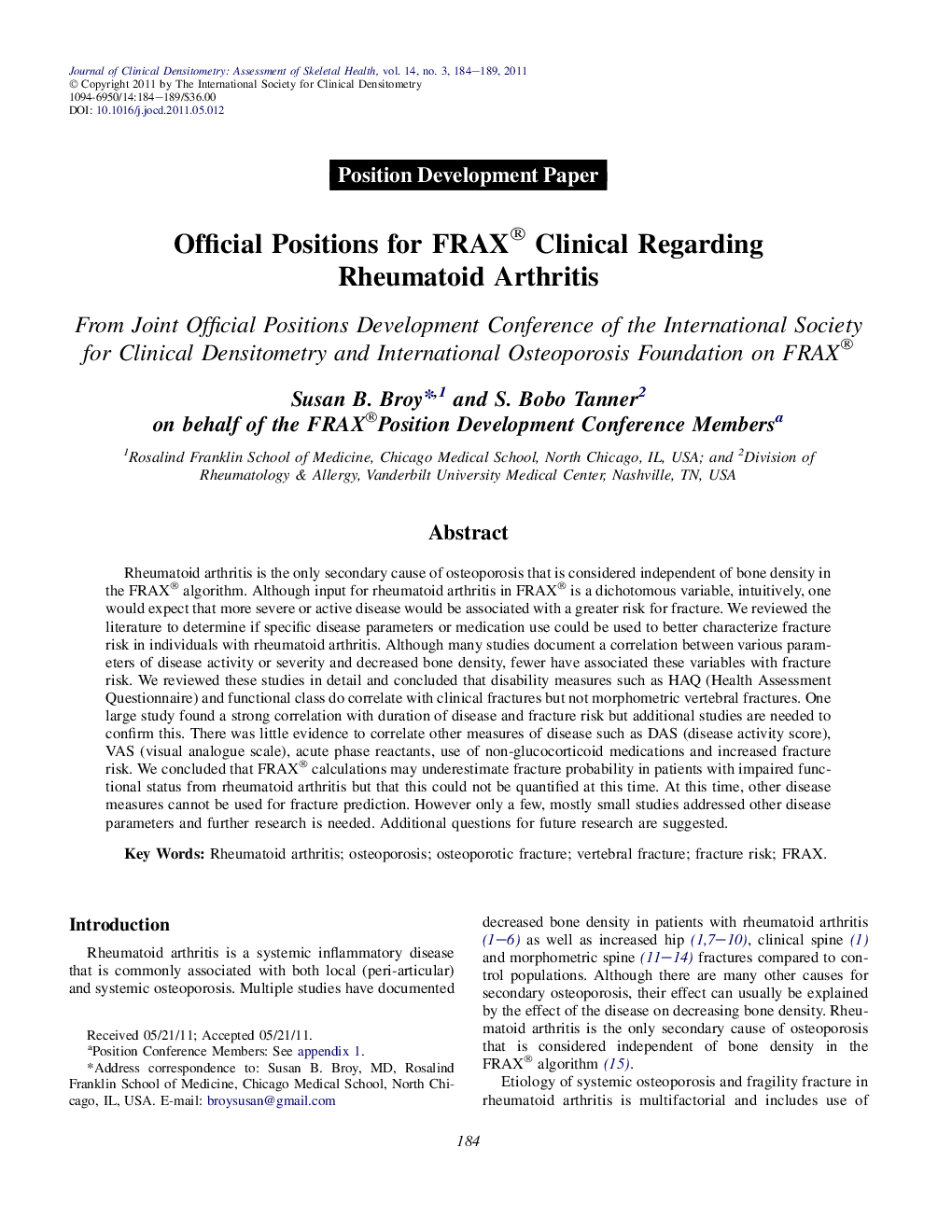| Article ID | Journal | Published Year | Pages | File Type |
|---|---|---|---|---|
| 3271297 | Journal of Clinical Densitometry | 2011 | 6 Pages |
Abstract
Rheumatoid arthritis is the only secondary cause of osteoporosis that is considered independent of bone density in the FRAX® algorithm. Although input for rheumatoid arthritis in FRAX® is a dichotomous variable, intuitively, one would expect that more severe or active disease would be associated with a greater risk for fracture. We reviewed the literature to determine if specific disease parameters or medication use could be used to better characterize fracture risk in individuals with rheumatoid arthritis. Although many studies document a correlation between various parameters of disease activity or severity and decreased bone density, fewer have associated these variables with fracture risk. We reviewed these studies in detail and concluded that disability measures such as HAQ (Health Assessment Questionnaire) and functional class do correlate with clinical fractures but not morphometric vertebral fractures. One large study found a strong correlation with duration of disease and fracture risk but additional studies are needed to confirm this. There was little evidence to correlate other measures of disease such as DAS (disease activity score), VAS (visual analogue scale), acute phase reactants, use of non-glucocorticoid medications and increased fracture risk. We concluded that FRAX® calculations may underestimate fracture probability in patients with impaired functional status from rheumatoid arthritis but that this could not be quantified at this time. At this time, other disease measures cannot be used for fracture prediction. However only a few, mostly small studies addressed other disease parameters and further research is needed. Additional questions for future research are suggested.
Related Topics
Health Sciences
Medicine and Dentistry
Endocrinology, Diabetes and Metabolism
Authors
Susan B. Broy, S. Bobo Tanner, FRAX®Position Development Conference Members FRAX®Position Development Conference Members,
